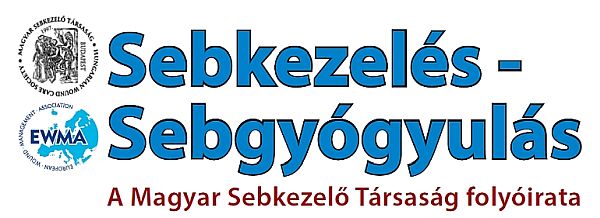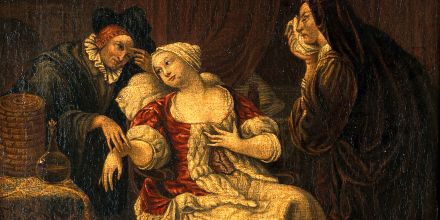"Wound care - Wound healing" journal



The journal of the Hungarian Wound Care Society is the
Wound care - Wound healing (Sebkezelés-Sebgyógyulás)
Editor in chief:
Péter Farkas, M. D., E-mail
Members of the Editorial Board:
Prof. István Juhász, M. D., András L. Kovács, M. D., István Sugár, M. D.
Edition, distribution:
Etalon '95 Ltd., E-mail
Typography and typographic design:
Pagent Reklám Ltd., E-mail

No. 2025/1. content:

- István Sugár, M. D.: Presidential greeting
Keywords: content of the journal incl. commemoration of György Nemes, past and future conferences
- Imola Sándor:
Survey of everyday wound care practices among professionals?
Abstract:
Professional workers involved in the care of chronic wounds often perform their work in difficult conditions without significant professional background. They often have to make decisions on their own, they find it difficult to get help in choosing the most appropriate dressing for the condition of the wound, their consultation opportunities are limited, and they do not have the necessary tools to document wound healing. The purpose of the study was to assess the common wound care procedures in practical life, as well as how the wound care teams know the types of wounds and the tools needed for care them. Do they perform a wound assessment? Are the wounds cared for in an appropriate environment with modern tools? How often are the conventional dressings and antiseptics used? How do they document the condition of the wound and the type of dressings applied?
Keywords: wound treatment, wound assessment, documentation, dressings, wound
disinfectants
- Tímea Hevér, M. D., Ph. D.:
The role of Norwegian spruce resin (Picea abies) in modern wound care
Abstract: The management of chronic lower limb ulcers with different aetiologies requires complex, individualised approach. Treatment of the underlying cause is the first priority. In addition to the use of individually tailored smart dressings chosen according to the condition of the wound, alternative treatment methods such as zinc hyaluronate or spruce resin should be considered, especially if their efficacy has been demonstrated in preliminary studies. In this article, we describe the experience with the use of the Norwegian spruce resin (Picea abies) Abilar®.
Keywords: Norwegian spruce resin, Abilar®, acute wound, chronic wound, atypical wounds, wound healing, antibacterial effect
- Péter Farkas, M. D.: Report on the EWMA 2025 Congress
- István Sugár, M. D.: 28th Scientific Meeting of the Hungarian Podiatric, Ankle and Foot Surgery Society
- István Sugár, M. D.: Treatment and prevention of diabetic/neuropathic foot complications (training)
- Lujza Szitás: Report on the accredited training course "Wound Management of Chronic Wounds - Practical Education with Augmented Reality-Based Presentation of Real Cases"
- Prof. Miklós Szokoly, M. D.: Prof. György Nemes, M. D.
- 27th Congress of the Hungarian Wound Care Society
- Invitation to the General assembly of the HWCS



